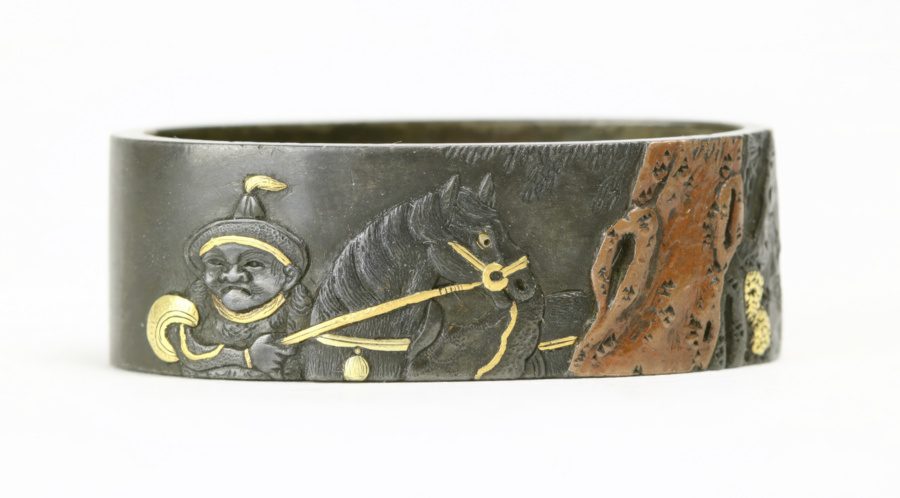Fuchi: Exploring the Japanese Ferrule’s Meaning
NO AI USED This Article has been written and edited by our team with no help of the AI
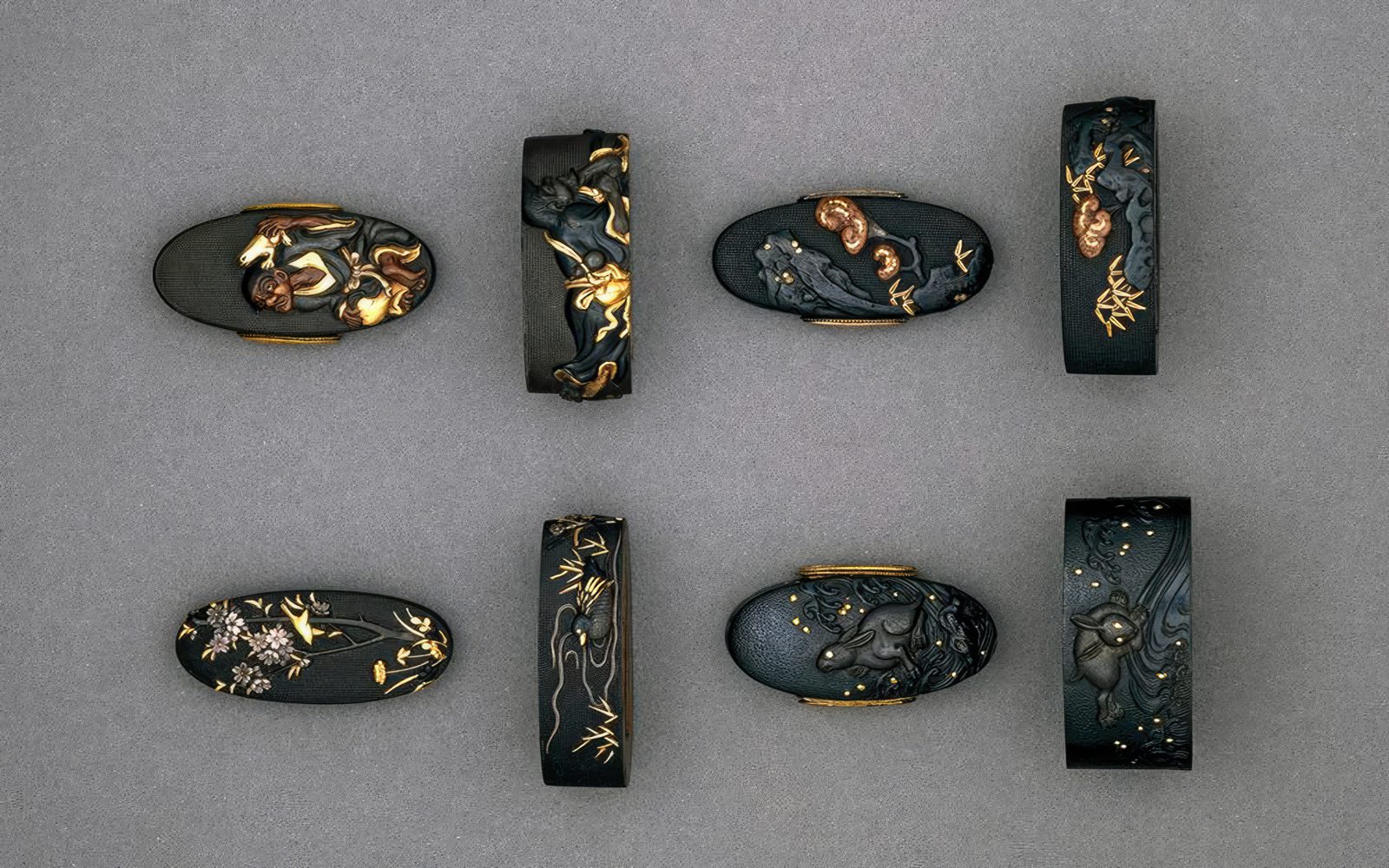
The fuchi, an ornamental ring encircling the hilt of a Japanese sword or dagger, is much more than a decorative piece.
Serving as a ferrule or hilt collar, it reinforces the base of the hilt, ensuring durability and functionality.
Often crafted from exquisite alloys like shakudo (copper-gold) or shibuichi (copper-silver), the fuchi showcases the intricate artistry of traditional Japanese metalwork.
Let’s delve into the role of the fuchi, its connection to other sword mountings, and the craftsmanship that made it a key element in Japanese swords.
Craftsmanship and Design of a Fuchi
The Japanese term fuchi (縁) translates as border or margin. These hilt collars or ferrules serve as both a functional and decorative component of sword mounting. The fuchi is frequently designed to match the kashira (pommel cap), collectively referred to as fuchigashira, positioned at opposite ends of the hilt.
Material and Construction

Early fuchi, as seen in uchigatana, were mostly made from horn. However, in later periods, metal emerged as the preferred material, replacing horn. Like many other Japanese sword mounts, fuchi were often made from shakudo—a copper-gold alloy artificially patinated to develop a dark, raven-black finish.
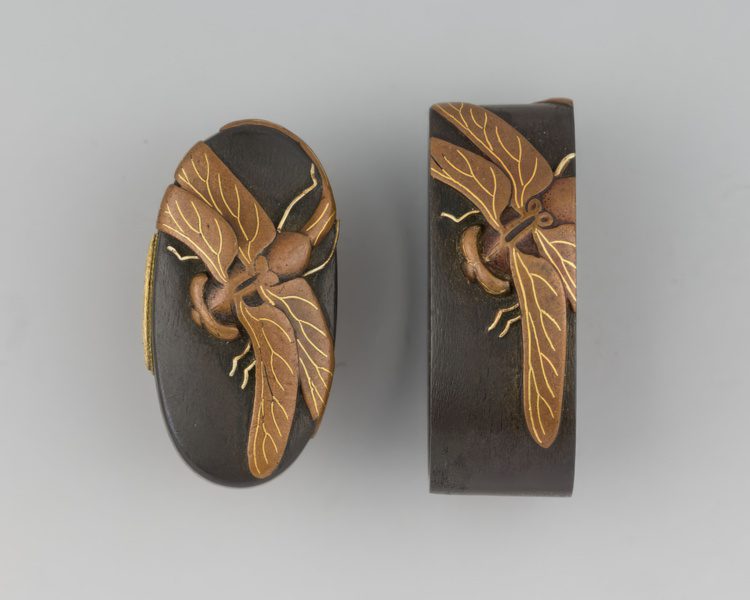
Others were made of shibuichi—a copper-silver alloy patinated into various colors such as brown, blue, or greenish gray—and inlaid with pieces of metal of varying alloys including copper and gold in contrasting colors.
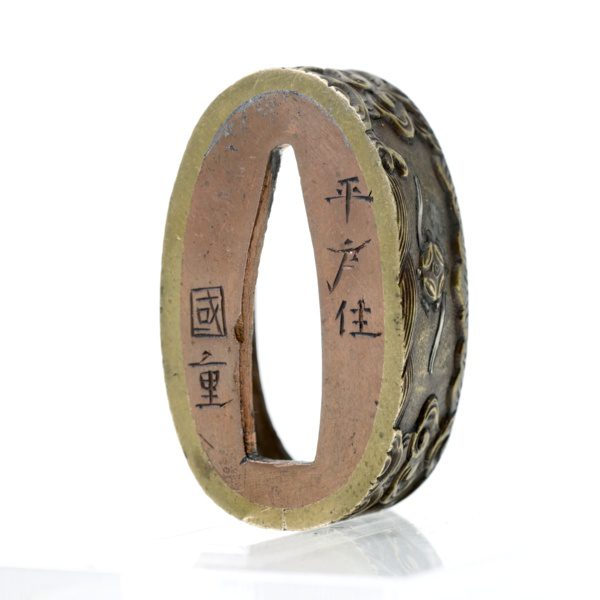
The fuchi has a soldered plate on the bottom, with a hole to allow the tang to pass through. Sometimes, the bottom plate is signed by its maker and includes information about the residence of the maker, date, and occasionally, name of a second artist. However, the tomozoko-fuchi (共底縁) is a type of fuchi that is not constructed from a metal ring with a soldered bottom plate.
Function of a Fuchi
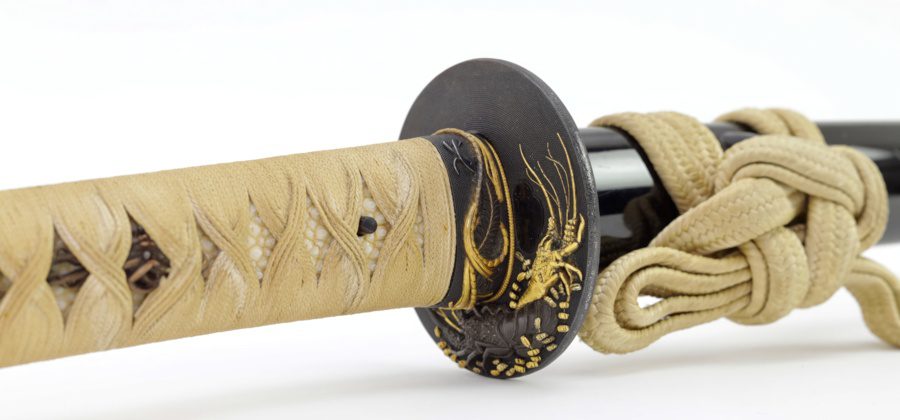
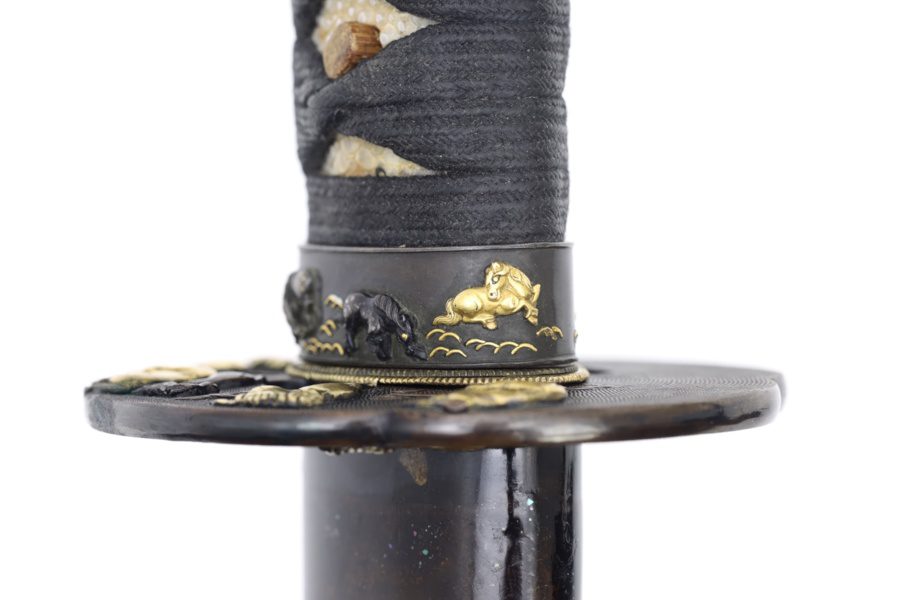
The fuchi is attached at the base of the grip, holding together the two wooden halves of the hilt (tsuka). It sits next to the sword guard (tsuba), a disk-shaped piece of metal that protects the hand. However, in an aikuchi-style mounting that comes without a sword guard, the fuchi and sayaguchi (mouth of a scabbard) meet flatly.

Design and Craftsmanship
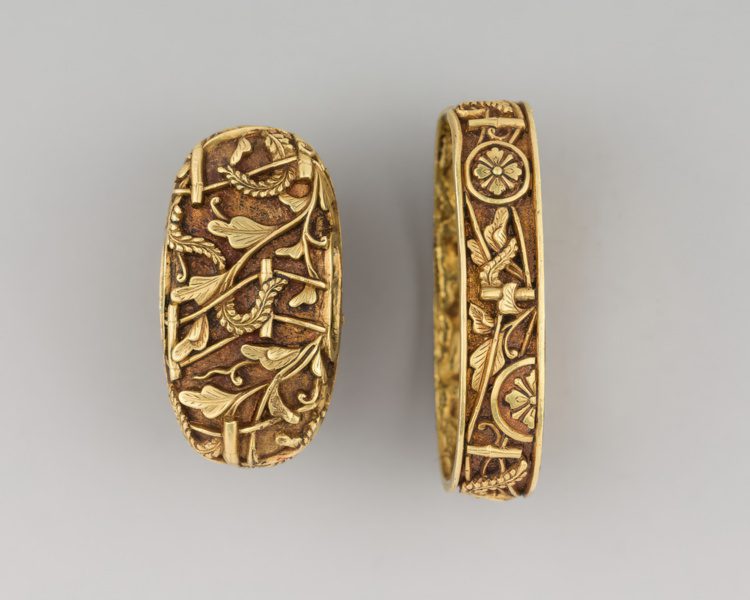
The fuchi was often elaborate, and its surface was often polished or decorated with a nanako (fish roe) pattern, made by punching with a rounded hollow-point fine punch. Other techniques include carving, engraving, and inlays. The fuchi was usually designed to match the kashira (pommel cap), though some ornamental fuchi are sometimes used with a plain horn kashira.
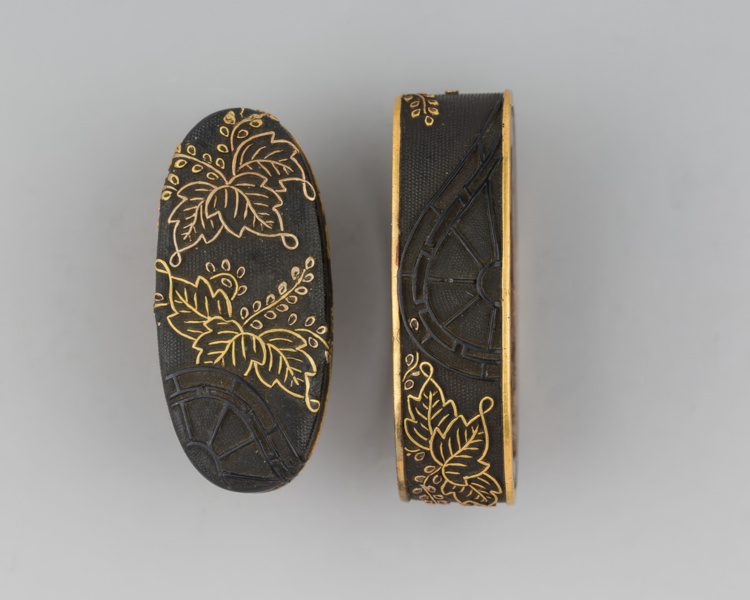
During the Edo period, the samurai wore a daisho—a set of long and short swords. The daisho was mounted with matching koshirae. This means that the fuchi of both swords often match. Sometimes, the crest (mon) is featured as a decorative element on the fuchi as well as on other mountings.
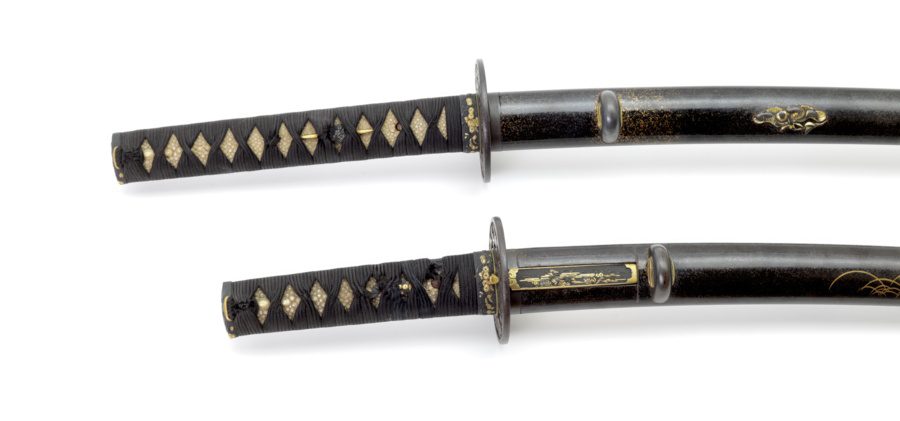
Some fuchi, along with other sword mounts, exhibit strong foreign influence. Often produced near foreign trade centers, these fittings found a market among traders who brought them as gifts on diplomatic or trade missions. Sword fitting maker Hirado Kunishige frequently incorporated a blend of Chinese and Western motifs into his work.
